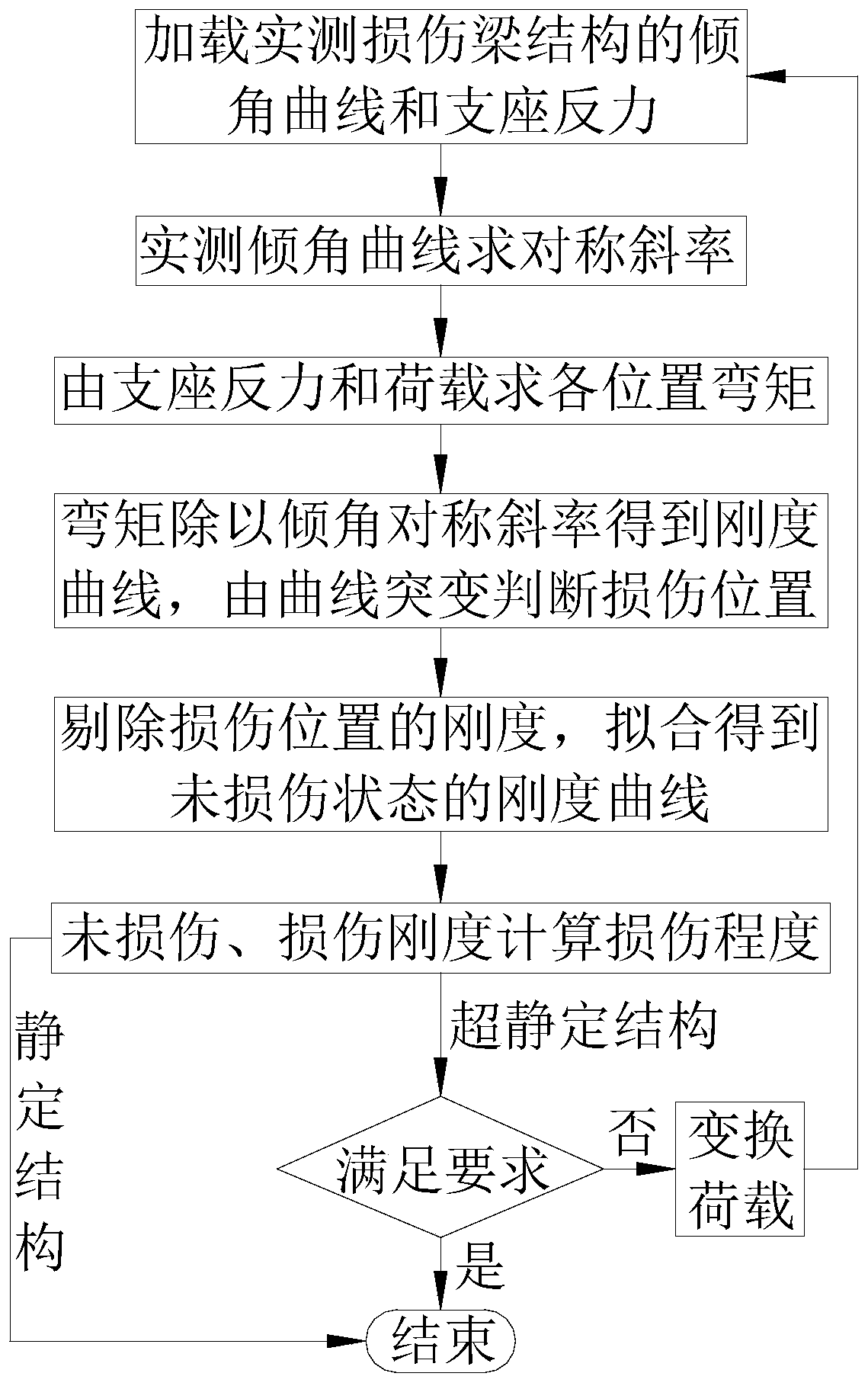Beam structure damage identification method based on support reaction force and inclination symmetric slope
A technology of bearing reaction force and damage identification, which is used in the testing of machine/structural components, elasticity testing, measuring devices, etc., to achieve accurate positioning, quantitative analysis, and accurate evaluation.
- Summary
- Abstract
- Description
- Claims
- Application Information
AI Technical Summary
Problems solved by technology
Method used
Image
Examples
Embodiment 1
[0131] Such as Figure 16 As shown, the span of the simply supported beam is 100cm, and a unit is divided every 5cm, with a total of 20 units and 21 measuring points (the numbers in the upper row of circles in the figure are unit numbers, and the numbers in the lower row are measuring point numbers). The section size of the simply supported beam is b×h=4.5cm×1.5cm, and the material elastic modulus of the simply supported beam is 2.7×10 3 MPa, Poisson's ratio is 0.37, density is 1200kg / m 3 .
[0132] The damage in the actual engineering structure, such as the generation of cracks, material corrosion or the reduction of elastic modulus, generally only causes a large change in the structural stiffness, but has little impact on the quality of the structure. Therefore, in the finite element calculation, it is assumed that the damage of the structural element only causes the decrease of the stiffness of the element, and does not cause the change of the mass of the element. Damage...
Embodiment 2
[0142] Such as Figure 21 As shown, the span of the cantilever beam is 100cm, and a unit is divided every 5cm, with a total of 20 units and 21 measuring points (the numbers in the circles in the upper row in the figure are the unit numbers, and the numbers in the lower row are the measuring point numbers). The cross-sectional size of the cantilever beam is b×h=4.5cm×1.5cm, and the elastic modulus of the cantilever beam material is 2.7×10 3 MPa, Poisson's ratio is 0.37, density is 1200kg / m 3 .
[0143] The fixed support end unit 1, the mid-span unit 10 and the free end unit 20 of the cantilever beam have different degrees of damage, and the damage conditions are shown in Table 2.
[0144] Table 2 Multiple damage conditions of cantilever beam
[0145]
[0146] The specific implementation steps are as follows:
[0147] Step 1: Apply a concentrated load of 10N to the 21st measuring point at the cantilever end of the damaged cantilever beam to obtain the measured inclination...
Embodiment 3
[0154] Such as Figure 26 As shown, the span layout of the three-span continuous beam is 100+150+100cm, and a unit is divided every 10cm, with a total of 35 units and 36 measuring points (the numbers in the circles in the upper row in the figure are the unit numbers, and the numbers in the lower row are support number). The section size of the three-span continuous beam is b×h=4.5cm×1.5cm, and the elastic modulus of the material of the three-span continuous beam is 2.7×10 3 MPa, Poisson's ratio is 0.37, density is 1200kg / m 3 .
[0155] The unit 7 of the three-span continuous beam is located near the 0 point of the side span bending moment under the uniform load, the unit 13 is located near the 0 point of the bending moment under the concentrated load of the middle span, the unit 18 is the mid-span unit of the middle span, and the unit 26 is the largest third span The damage conditions of the negative bending moment unit are shown in Table 3.
[0156] Table 3 Damage conditi...
PUM
 Login to View More
Login to View More Abstract
Description
Claims
Application Information
 Login to View More
Login to View More - R&D
- Intellectual Property
- Life Sciences
- Materials
- Tech Scout
- Unparalleled Data Quality
- Higher Quality Content
- 60% Fewer Hallucinations
Browse by: Latest US Patents, China's latest patents, Technical Efficacy Thesaurus, Application Domain, Technology Topic, Popular Technical Reports.
© 2025 PatSnap. All rights reserved.Legal|Privacy policy|Modern Slavery Act Transparency Statement|Sitemap|About US| Contact US: help@patsnap.com



